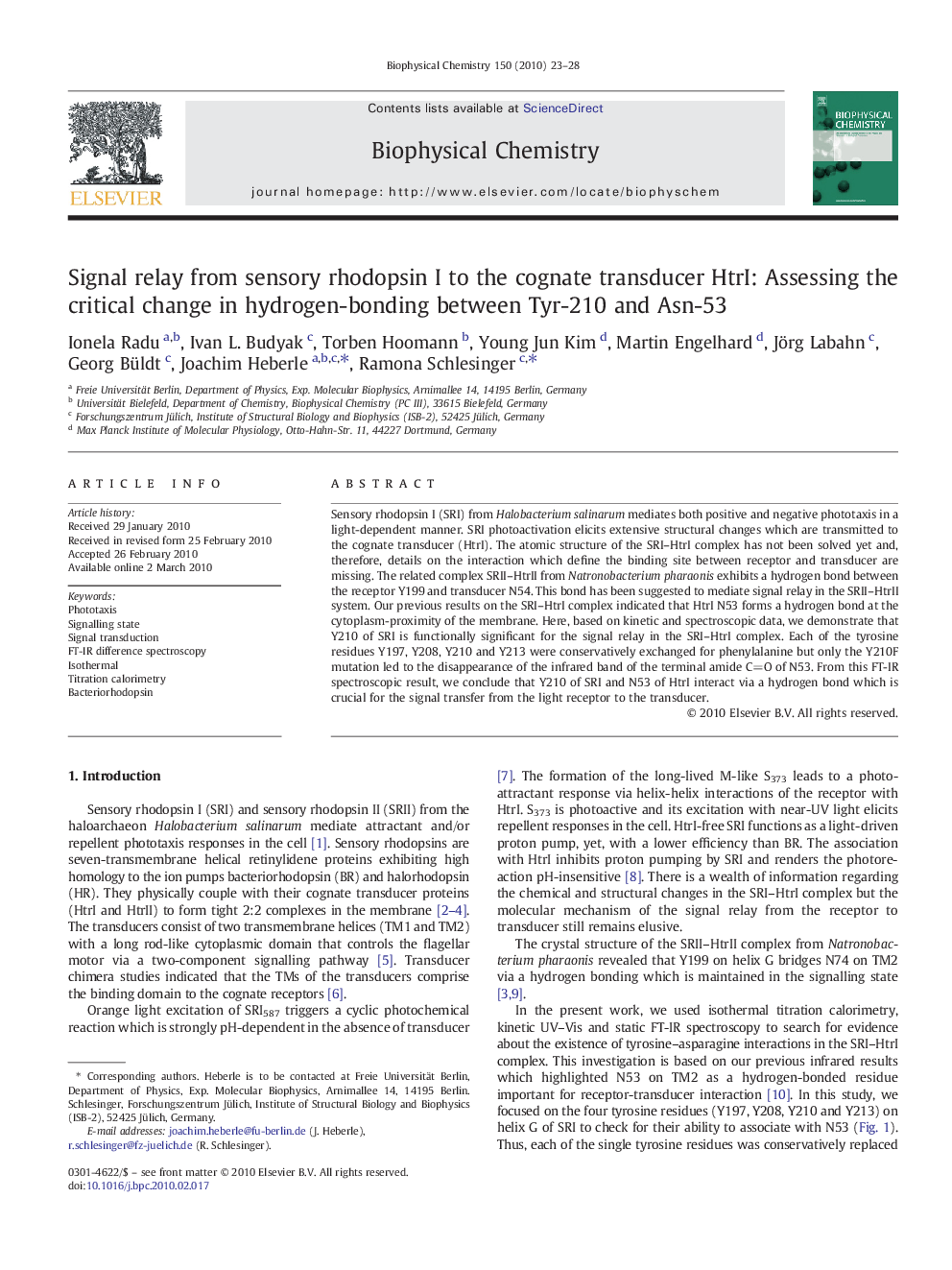| Article ID | Journal | Published Year | Pages | File Type |
|---|---|---|---|---|
| 5371366 | Biophysical Chemistry | 2010 | 6 Pages |
Sensory rhodopsin I (SRI) from Halobacterium salinarum mediates both positive and negative phototaxis in a light-dependent manner. SRI photoactivation elicits extensive structural changes which are transmitted to the cognate transducer (HtrI). The atomic structure of the SRI-HtrI complex has not been solved yet and, therefore, details on the interaction which define the binding site between receptor and transducer are missing. The related complex SRII-HtrII from Natronobacterium pharaonis exhibits a hydrogen bond between the receptor Y199 and transducer N54. This bond has been suggested to mediate signal relay in the SRII-HtrII system. Our previous results on the SRI-HtrI complex indicated that HtrI N53 forms a hydrogen bond at the cytoplasm-proximity of the membrane. Here, based on kinetic and spectroscopic data, we demonstrate that Y210 of SRI is functionally significant for the signal relay in the SRI-HtrI complex. Each of the tyrosine residues Y197, Y208, Y210 and Y213 were conservatively exchanged for phenylalanine but only the Y210F mutation led to the disappearance of the infrared band of the terminal amide C=O of N53. From this FT-IR spectroscopic result, we conclude that Y210 of SRI and N53 of HtrI interact via a hydrogen bond which is crucial for the signal transfer from the light receptor to the transducer.
